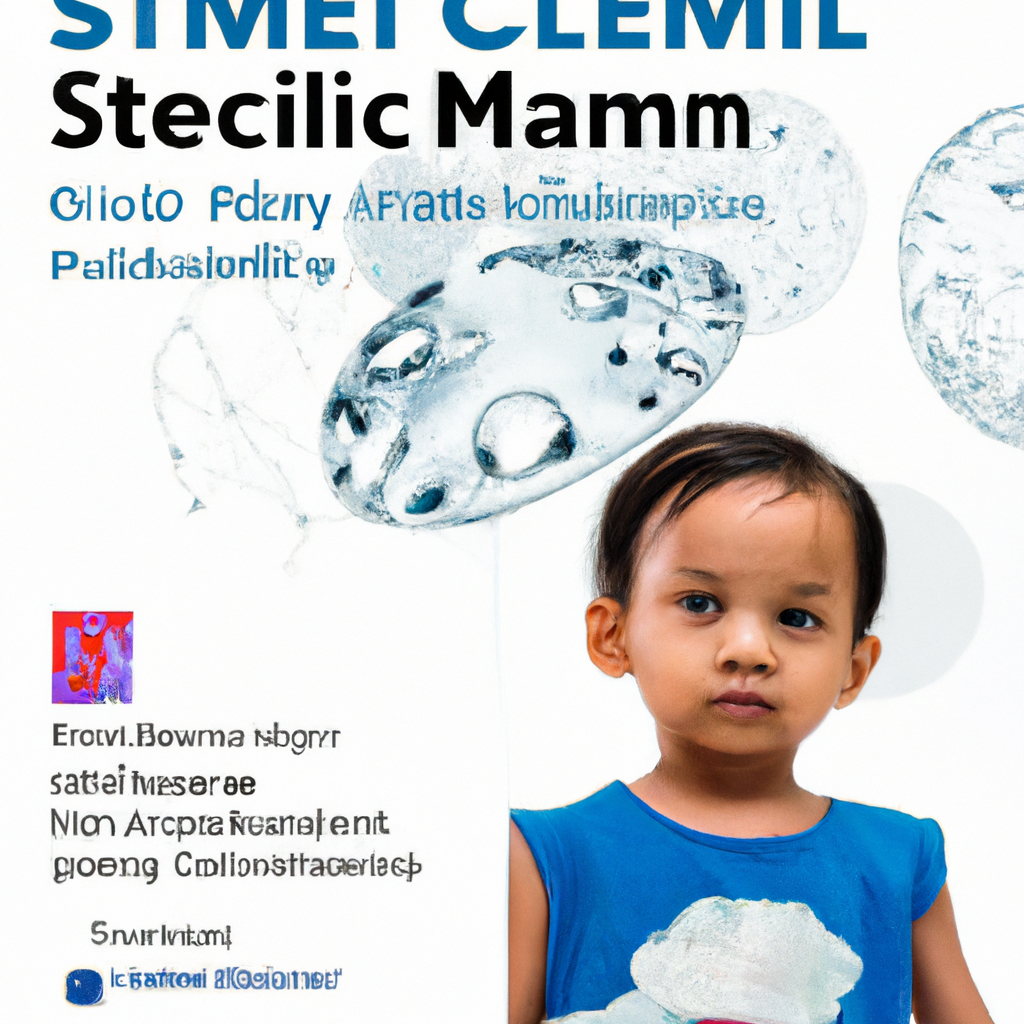Are you tired of living with chronic pain and seeking alternative solutions for relief? Look no further, as this article aims to provide you with valuable information on accessing stem cell therapy for chronic pain management in Malaysia. Stem cell therapy has gained significant recognition in recent years for its potential to alleviate pain and promote healing. In this comprehensive guide, we will explore the various aspects of accessing this therapy in Malaysia, including the process, benefits, and considerations. Whether you are a local resident or seeking medical tourism, join us on this journey to discover how stem cell therapy can be a game-changer in your quest for pain relief.
Understanding Stem Cell Therapy

Definition of Stem Cell Therapy
Stem cell therapy is a regenerative medicine approach that utilizes the unique abilities of stem cells to repair and regenerate damaged tissues in the body. Stem cells, which are unspecialized cells capable of dividing and differentiating into different cell types, are harvested from various sources and then administered to target areas of the body where healing is needed. This innovative treatment has shown great potential in addressing chronic pain and promoting tissue repair.
Types of Stem Cells Used in Therapy
There are several types of stem cells used in therapy, each with its own characteristics and capabilities. Embryonic stem cells, derived from human embryos, are highly versatile and can differentiate into any cell type in the body. However, ethical concerns surround their usage. Adult stem cells, found in various tissues such as bone marrow, adipose tissue, and umbilical cord blood, are more readily available and do not pose ethical issues. Induced pluripotent stem cells, generated by reprogramming adult cells, can also be used for therapy. The choice of stem cell type depends on the specific needs of the patient and the condition being treated.
How Stem Cell Therapy Works
Stem cell therapy works by harnessing the regenerative potential of stem cells to promote healing and tissue repair. The procedure typically involves harvesting stem cells from the patient’s own body or from a donor, processing and isolating the cells in a laboratory, and then administering them back into the patient’s body. Once introduced, the stem cells can migrate to damaged tissues or organs and release growth factors, cytokines, and other signaling molecules that promote cell regeneration and reduce inflammation. This process can help alleviate chronic pain and enhance the body’s natural healing mechanisms.
Malaysia as a Destination for Stem Cell Therapy
Introduction to Malaysia’s Medical Tourism
Malaysia has emerged as a leading destination for medical tourism, offering state-of-the-art facilities and highly skilled medical professionals. The country’s healthcare system is known for its affordability, high quality of care, and emphasis on patient satisfaction. Medical tourists from around the world are drawn to Malaysia not only for the cost savings but also for the comprehensive range of medical treatments and services available. Stem cell therapy is one such treatment that has gained popularity among international patients seeking effective solutions for chronic pain management.
Advantages of Choosing Malaysia for Stem Cell Therapy
There are several advantages to choosing Malaysia as a destination for stem cell therapy. Firstly, the country boasts a wide selection of experienced and highly trained stem cell specialists who are well-versed in the latest advancements in regenerative medicine. Additionally, the cost of stem cell therapy in Malaysia is often significantly lower than in many other countries, making it a more affordable option for patients. Moreover, Malaysia’s well-developed infrastructure, modern healthcare facilities, and adherence to international standards ensure optimal safety and care for patients seeking stem cell therapy.
Reputation of Stem Cell Therapy in Malaysia
The reputation of stem cell therapy in Malaysia is steadily growing, thanks to the success stories and positive outcomes experienced by patients who have undergone the treatment. Stem cell clinics in Malaysia adhere to strict ethical guidelines, ensuring the safety and well-being of patients. Furthermore, Malaysia’s regulatory bodies, such as the Ministry of Health, closely monitor and regulate stem cell therapies to maintain high standards of patient care and treatment efficacy. The growing number of international patients choosing Malaysia for stem cell therapy is a testament to the country’s reputation in the field.
Finding a Reputable Stem Cell Clinic

Researching Stem Cell Clinics in Malaysia
When seeking stem cell therapy in Malaysia, thorough research is essential to find a reputable clinic that meets your specific needs. Begin by exploring the websites and online presence of different clinics, paying attention to their experience, expertise, and the range of treatments they offer. Look for certifications and accreditations that validate the clinic’s adherence to industry standards and regulations.
Credentials and Certifications to Look for
When considering a stem cell clinic in Malaysia, it is important to ensure that the medical professionals and staff involved have the necessary credentials and certifications. Look for doctors who specialize in regenerative medicine and have extensive experience in stem cell therapy. Additionally, check if the clinic has obtained relevant certifications from reputable organizations, such as ISO or GMP, which signify their commitment to quality and safety.
Consultation Process and Doctor’s Expertise
A reputable stem cell clinic in Malaysia will prioritize a thorough consultation process to assess your condition and determine the most suitable treatment plan. During the consultation, the doctor should take the time to explain the procedure, address any concerns or questions you may have, and provide realistic expectations for the outcomes of stem cell therapy. It is also essential to inquire about the doctor’s expertise and experience in performing stem cell treatments, ensuring you are in capable hands.
Reviews and Testimonials from Previous Patients
One of the most valuable sources of information when considering a stem cell clinic in Malaysia is the feedback from previous patients. Look for reviews and testimonials on the clinic’s website or on reputable review platforms to gauge the experiences of others. Positive testimonials and success stories can provide reassurance and confidence in the clinic’s capabilities, while any negative feedback or concerns should be thoroughly considered before making a decision.
Understanding Chronic Pain and Its Causes
Definition and Classification of Chronic Pain
Chronic pain is characterized as persistent pain that lasts for more than three to six months, beyond the normal healing time for an injury or condition. It can manifest in various ways, such as a dull ache, sharp stabbing pain, or a burning sensation. Chronic pain is often associated with underlying medical conditions, such as arthritis, fibromyalgia, or nerve damage, and can significantly impact a person’s quality of life.
Common Causes of Chronic Pain
Chronic pain can have numerous causes, including injuries, medical conditions, and certain lifestyle factors. Some common causes include musculoskeletal conditions like osteoarthritis or rheumatoid arthritis, nerve damage or neuropathy, fibromyalgia, and persistent headaches or migraines. Additionally, certain lifestyle factors, such as poor posture, excessive stress, or physical inactivity, can contribute to the development or exacerbation of chronic pain.

How Chronic Pain Impacts Daily Life
Living with chronic pain can have a profound impact on daily life, both physically and emotionally. The constant presence of pain can make simple tasks challenging and limit one’s ability to participate in activities they once enjoyed. Chronic pain can also disrupt sleep patterns, leading to fatigue and decreased concentration. Furthermore, the emotional toll of chronic pain, including feelings of frustration, anxiety, and depression, should not be underestimated. Proper management and effective treatments, such as stem cell therapy, can significantly improve a person’s quality of life and overall well-being.
Assessment and Diagnosis of Chronic Pain
Importance of Accurate Diagnosis
Accurate diagnosis of chronic pain is crucial for determining the most appropriate treatment and optimizing outcomes. A comprehensive assessment and diagnosis allow medical professionals to identify the underlying cause of the pain and tailor a targeted treatment plan. It is essential to consult with a pain specialist, such as an orthopedic surgeon or a neurologist, who has specific expertise in chronic pain management.
Physical Examination and Medical History
During the assessment, the healthcare provider will conduct a thorough physical examination and gather a detailed medical history. The physical examination may involve assessing the affected area, evaluating range of motion, and identifying any signs of inflammation or tissue damage. Your medical history, including previous injuries, medical conditions, and lifestyle factors, will provide valuable insight into the potential causes and triggers of your chronic pain.
Diagnostic Tests and Imaging
In some cases, diagnostic tests and imaging may be necessary to further evaluate the underlying cause of chronic pain. These may include X-rays, MRI scans, CT scans, or nerve conduction studies, among others. These tests can help visualize the affected area, identify any structural abnormalities or damage, and guide the treatment planning process. The results of these tests, combined with the physical examination and medical history, provide a comprehensive understanding of the source of the chronic pain.
Consultation with Specialists
Depending on the specific nature of the chronic pain, a consultation with a specialist may be necessary for a more focused evaluation. Specialists such as rheumatologists, neurologists, or orthopedic surgeons can bring their expertise to the diagnosis process, contributing to a more accurate assessment and ensuring the most appropriate treatment plan is established. Collaboration between multiple specialists may be necessary for complex cases to ensure comprehensive care.
Benefits and Effectiveness of Stem Cell Therapy for Chronic Pain
How Stem Cell Therapy Provides Pain Relief
Stem cell therapy offers a unique approach to chronic pain management by targeting the underlying cause of the pain and promoting tissue repair. The injected stem cells can migrate to the affected area, releasing growth factors and signaling molecules that reduce inflammation and accelerate healing. By repairing damaged tissues and restoring their normal function, stem cell therapy can provide lasting pain relief and improve overall quality of life.

Potential for Regeneration and Tissue Repair
One of the key advantages of stem cell therapy is its potential to regenerate damaged tissues and promote tissue repair. Stem cells can differentiate into various cell types, including those found in bones, cartilage, and nerves, allowing them to restore function to these tissues. This regenerative capacity can help alleviate chronic pain associated with conditions such as osteoarthritis, degenerative disc disease, or nerve damage.
Reducing Inflammation and Promoting Healing
Chronic pain is often accompanied by inflammation, which can contribute to further tissue damage and exacerbate symptoms. Stem cells release anti-inflammatory molecules that help reduce inflammation, relieving pain and creating an optimal environment for healing. By modulating the body’s immune response, stem cell therapy can address the root cause of chronic pain and promote a healthy healing process.
Long-Term Results and Effects
While individual responses to stem cell therapy may vary, the long-term results and effects can be significant for many patients. Stem cells have the potential to provide long-lasting pain relief and improve functionality, allowing individuals to resume their daily activities and regain their quality of life. It is important to note that the full effects of stem cell therapy may take several weeks or months to manifest, as the cells work to regenerate and repair the damaged tissues.
Considerations and Risks of Stem Cell Therapy
Costs of Stem Cell Therapy in Malaysia
One important consideration when exploring stem cell therapy in Malaysia is the associated costs. The cost of stem cell therapy can vary depending on several factors, including the type of stem cells used, the clinic’s location, and the specific condition being treated. While stem cell therapy may be more affordable in Malaysia compared to some other countries, it is essential to obtain detailed cost estimates and factor in any additional expenses, such as travel and accommodation, when budgeting for the treatment.
Insurance Coverage and Financial Options
Before proceeding with stem cell therapy, it is advisable to check if your health insurance covers the treatment. While some insurance policies may provide coverage for certain medical conditions and procedures, coverage for stem cell therapy can vary. It is important to consult with your insurance provider to understand the extent of coverage, if any. For those without insurance coverage, some clinics may offer financing options or payment plans to help make the treatment more affordable.
Ethical and Legal Considerations
Stem cell therapy raises important ethical and legal considerations due to the use of embryonic stem cells and the potential for unregulated practices. It is essential to choose a reputable stem cell clinic in Malaysia that adheres to ethical guidelines and operates within the legal framework set by the country’s regulatory bodies. The clinic should have proper consent procedures in place, ensure patient safety, and maintain transparency regarding the source of their stem cells.

Potential Risks and Side Effects
Like any medical procedure, stem cell therapy carries some risks and potential side effects. These can include infection at the injection site, bleeding, or allergic reactions. It is crucial to discuss these potential risks with your healthcare provider and ensure that the clinic follows strict sterility protocols and safety guidelines. While the risks are generally low, understanding and acknowledging them is vital to make an informed decision about pursuing stem cell therapy.
Preparing for Stem Cell Therapy
Initial Consultation and Assessment
The first step in preparing for stem cell therapy is to schedule an initial consultation with a reputable stem cell clinic in Malaysia. During this consultation, the healthcare provider will assess your medical history, conduct a physical examination, and order any necessary diagnostic tests to determine if you are a suitable candidate for stem cell therapy. This initial assessment helps the healthcare team understand your specific needs and develop an individualized treatment plan.
Medical Clearance and Pre-Treatment Evaluations
After the initial assessment, it is important to obtain medical clearance from your primary care physician or any relevant specialists. These healthcare professionals will review your medical history, evaluate your overall health status, and provide the necessary clearances for you to proceed with stem cell therapy. Additionally, pre-treatment evaluations, such as blood tests and imaging studies, may be required to ensure optimal safety and treatment efficacy.
Preparing Physically and Mentally
Preparing for stem cell therapy involves taking care of your physical and mental well-being. Follow any pre-treatment instructions provided by your healthcare provider, such as avoiding certain medications or adjusting your diet. Engaging in regular exercise, practicing stress-reducing techniques, and getting adequate rest can also contribute to your overall preparedness. Additionally, it is important to maintain a positive mindset and have realistic expectations for the treatment process and outcomes.
Understanding the Treatment Process
Before undergoing stem cell therapy, it is crucial to have a clear understanding of the treatment process. Discuss the procedure with your healthcare provider, including the methods of stem cell administration, the expected duration of the treatment, and any potential discomfort or side effects. Knowing what to expect can help alleviate anxiety and ensure that you feel prepared and informed throughout the treatment journey.
The Stem Cell Therapy Procedure
Types of Stem Cell Administration
Stem cell therapy can be administered through various methods depending on the specific condition being treated and the desired outcomes. The most common methods include intravenous (IV) infusion, direct injection into the affected area, or a combination of both. Intravenous administration allows stem cells to circulate throughout the body, targeting multiple areas of inflammation or damage, while direct injection ensures precise placement of the cells in the affected tissue or joint.
Collection and Processing of Stem Cells
The process of collecting and processing stem cells for therapy typically begins with the extraction of a patient’s own stem cells or the use of donor cells. If using the patient’s own cells, they may be harvested from the bone marrow, adipose tissue, or peripheral blood. The harvested cells are then processed in a laboratory, where they are isolated and concentrated to obtain a higher concentration of viable stem cells. This processing stage is crucial to ensure the cells’ potency and maximize their therapeutic potential.
Injection Techniques and Targeted Areas
During the stem cell therapy procedure, the healthcare provider will utilize specialized injection techniques to deliver the stem cells to the targeted areas. The specific technique and route of injection will depend on the condition being treated and the desired outcomes. The provider may use ultrasound or fluoroscopic guidance to ensure accurate placement of the stem cells in areas such as joints, muscles, or soft tissues. Precision in injection techniques helps optimize treatment efficacy and enhance the chances of successful outcomes.
Anesthesia and Sedation Options
Depending on the specific procedure and individual patient needs, various anesthesia and sedation options may be available to ensure comfort during the stem cell therapy procedure. Local anesthesia is commonly used, numbing the targeted area and minimizing any discomfort during the injections. In some cases, conscious sedation or general anesthesia may be recommended to ensure patient relaxation and facilitate the procedure. The anesthesia and sedation options will be discussed and determined by your healthcare provider based on your specific needs and medical history.
Success Stories and Patient Experiences
Real-Life Accounts of Chronic Pain Management
Real-life accounts of individuals who have undergone stem cell therapy for chronic pain management provide valuable insight into the potential outcomes and benefits of the treatment. These stories highlight the positive changes experienced by patients, such as reduced pain, increased functionality, and an improved quality of life. Reading about the experiences of others who have successfully managed their chronic pain through stem cell therapy can offer hope and inspiration to those considering the treatment.
Improvements and Quality of Life
Many patients who have undergone stem cell therapy have reported significant improvements in their quality of life. The reduction in chronic pain allows individuals to participate in activities that were previously limited or impossible due to pain. Patients often report improved mobility, decreased reliance on pain medications, and an overall enhanced sense of well-being. Stem cell therapy has the potential to improve both physical and emotional aspects of a person’s life, restoring their ability to enjoy daily activities and pursue their passions.
Inspiring Stories from Stem Cell Therapy Patients
Stem cell therapy has brought about life-changing results for countless individuals living with chronic pain. From patients with degenerative joint conditions who have experienced pain relief and regained their mobility, to individuals with nerve damage who have seen improvements in sensation and function, these inspiring stories showcase the transformative power of stem cell therapy. Learning from these firsthand experiences can instill hope and motivation in those seeking to manage their chronic pain and reclaim their lives.
Research and Scientific Studies
Scientific research plays a vital role in advancing the field of stem cell therapy and understanding its potential applications. Ongoing studies and clinical trials contribute to the knowledge base surrounding the use of stem cells for chronic pain management, paving the way for further advancements and refinements in treatment protocols. By staying informed and keeping up with the latest research, both patients and healthcare providers can make informed decisions and contribute to the collective understanding of the benefits and effectiveness of stem cell therapy.
In conclusion, stem cell therapy offers a promising solution for managing chronic pain and promoting tissue repair. Malaysia’s thriving medical tourism industry, coupled with the country’s affordable and high-quality healthcare system, makes it an attractive destination for individuals seeking stem cell therapy. However, it is crucial to thoroughly research and choose a reputable clinic, ensuring proper credentials, certifications, and positive patient testimonials. By understanding the causes and impact of chronic pain, undergoing accurate assessment and diagnosis, and considering the benefits, risks, and preparations associated with stem cell therapy, individuals can make informed decisions about pursuing this innovative treatment. With the potential for long-term pain relief, improved functionality, and enhanced quality of life, stem cell therapy offers hope to those living with chronic pain.




